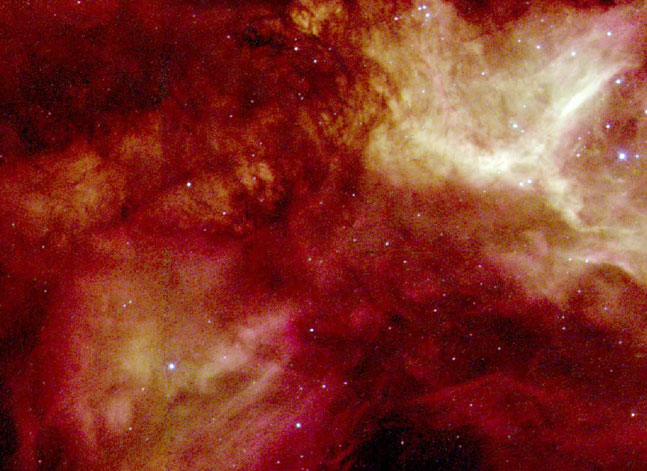Explanation: In a search for massive stars, the Hubble Space Telescope has peered into yet another spectacular region of star formation. This nebula, known as N159, spans over 150 light-years and is located in the neighboring Large Magellanic Cloud galaxy, about 170,000 light years distant. Visible in the above picture are bright newborn stars, dark filaments of dust, and red-glowing hydrogen gas. The aptly named Papillon Nebula (French for butterfly), is the unusual central compact cloud, highlighted in the inset. Reasons for the bipolar shape of the Papillon Nebula are currently unknown, but might indicate the presence of unseen high-mass stars and a thick gaseous disk.
1999 2000 2001 2002 2003 2004 2005 2006 2007 2008 2009 2010 2011 2012 2013 2014 2015 2016 2017 2018 2019 2020 2021 2022 2023 2024 2025 |
Yanvar' Fevral' Mart Aprel' Mai Iyun' Iyul' Avgust Sentyabr' Oktyabr' Noyabr' Dekabr' |
NASA Web Site Statements, Warnings, and Disclaimers
NASA Official: Jay Norris. Specific rights apply.
A service of: LHEA at NASA / GSFC
& Michigan Tech. U.
|
Publikacii s klyuchevymi slovami:
tumannost' Babochka
Publikacii so slovami: tumannost' Babochka | |
Sm. takzhe:
Vse publikacii na tu zhe temu >> | |
